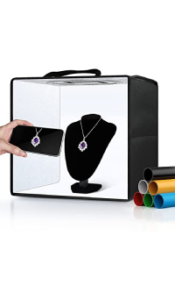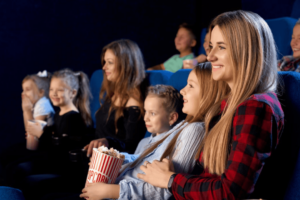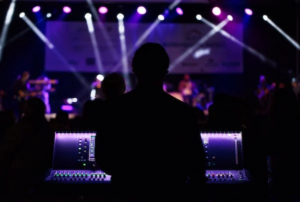An ADR mixer, short for automated dialogue replacement mixer or additional dialogue replacement mixer, makes sure actors’ dialogue is clear and accurate.
What Does an ADR Mixer Do?
ADR is sometimes called dubbing or looping, a throwback to the days when physical loops of film held dialogue and sound stock.
The work of ADR mixers begins when a film or television project nears the end of shooting or stops filming. These professionals perform several tasks, including:
- Discussing scenes where dialogue needs work with director and sound engineers and learning the context of dialogue
- Watching the film or program and reading through a breakdown of the lines of dialogue needing work
- Correcting dialogue and sound problems using a Digital Audio Workstation. This process includes removing background noise and replacing words or phrases with clearer takes.
- Choosing the right microphones (dynamic, carbon, ribbon, and condenser mics) and mic placement to recreate accurate scene audio
- Setting up microphones, booms, and lavaliers for actors in front of video screens
- Playing dialogue cues for actors delivering replacement lines. These are usually the original actors, but occasionally studios may use sound-alike actors. They encourage actors to pay attention to the dialogue’s timing, inflection, and pitch.
- Recording actors delivering dialogue while watching original video to keep them in time
- Editing new recorded dialogue into original audio tracks
- Making notes about which takes they prefer for each line of rerecorded audio
- Ensuring background sounds are in sync
- Working with sound supervisors to make sure ADR mixes need little manipulation
- Sending recorded audio to the ADR editor for final editing and mixing

Image via Frame.io
Many of these duties overlap with the roles of ADR recordists. However, many studios feel it’s more cost effective to hire an ADR mixer to perform all these roles.
Reasons Film and TV Programs Need ADR
There are several reasons film and TV programs need ADR. These include when:
- Noise on set overshadows the dialogue, such as when recording on busy streets or in airports
- Actors give poor performances
- Actors mumble their lines
- Actors speak with a strong or undesirable accent
- Actors accidentally talk over one another
- Directors change lines of dialogue after filming
- Story or continuity errors need fixing with additional dialogue
- The director wants sound of crowds or secondary characters added to bring the scene to life (loop group)
- The studio needs dialogue rerecorded in another language
- The studio needs alternate “clean” versions for airlines or foreign markets
- The director wants non-verbal actor sounds added, such as laughter or gasps
ADR is about more than fixing mistakes during filming. Consider it a key part of the storytelling process for films and television programs.
Skills of a Successful ADR Mixer
ADR mixers rely on a range of skills to succeed at work. These skills include:
- Technical audio skills: These skills help ADR mixers work well with the digital audio workstation, analogue recording equipment, microphones, and leading sound software, including ProTools. Having well-rounded audio skills, including knowing how to sound design, record, and produce, makes ADR mixers versatile.
- Sound-image synchronization: This skill helps ADR mixers sync dialogue to video footage.
- Advanced audio knowledge: ADR mixers should have a thorough understanding of acoustics and the recording process.
- Verbal communication: This skill helps ADR mixers accurately convey what they need from actors rerecording their lines.
- Multi-tasking: ADR mixers often work on several projects at once during periods of heavy production, so multi-tasking abilities are a must.
Personality of a Successful ADR Mixer
There are several qualities most successful ADR mixers have. These personality traits help them succeed on set. They include:
- Patience: Redoing lines can be stressful for actors, but a patient ADR mixer can put them at ease and continue working well.
- Empathy: The best ADR mixers can put themselves in an actor’s shoes. By relating to them, they can figure out what they need to say and do to elicit a great performance.
- Friendliness and warmth: Warm and friendly ADR mixers help actors feel comfortable and typically get the best performances. They are also more likely to find work.
- Diplomacy: While ADR mixers must offer feedback during recording sessions, they must do it in a tactful way which does not erode an actor’s confidence.
- Efficiency: Time is money on a film set, so ADR mixers should know how to get the dialogue they need in as few takes as possible.
- Reliability: Studios should know their ADR mixers will produce quality synced dialogue every time.
- Passion: The best ADR mixers are passionate about sound and technology. This quality motivates them to learn more about their craft.
- Collaborative: ADR mixers work with a team of people, including sound professionals and actors, so they should be natural collaborators.
Getting Started and Career Advancement for ADR Mixers
Education and Training
Most ADR mixers take courses in film, radio, TV, and broadcasting. While studying, they often get experience working with sound on community radio, student films, and other volunteer projects. These opportunities should help ADR mixers hone their technical skills. Networking and internships can help aspiring ADR mixers make connections for their career.
Professional Experience
Working as an ADR stage recordist or foley mixer can provide valuable paid experience working with sound. If these roles aren’t available, consider finding work in a different department. Working in a mailroom or as a personal assistant on a television or film set can help you meet sound department employees and secure your dream role. Some aspiring ADR mixers also work in recording studios as assistant engineers or runners before transitioning to film or TV.
Experienced ADR mixers may become sound engineers. They may also start their own ADR studio or music studio.
How Much Does an ADR Mixer Make?
ADR mixers make an average salary of $76,800 per year. Typical salaries range from $51,000 on the lower end to $114,000. A union Y-1 entry-level re-recording mixer’s hourly rate starts at around $57. However, ADR mixers need experience to graduate into the union.
Every ADR mixer has their own financial arrangement with their employer. While employers must adhere to the minimum pay rates set by unions, they do not have to give salaries. As a result, some ADR mixers are unsalaried workers.
Unions, Groups, and Associations
ADR mixers must complete a certain amount of hours to join a union and get on the roster. Most of these hours will be at non-union facilities. After completing these hours, most ADR mixers join the IATSE Labor Union.
Lifestyle of ADR Mixers
ADR mixers work long hours, often between 12 and 14 a day during projects. Studio sessions often stretch well into the night. This environment is often fast-paced, so ADR mixers should enjoy working under pressure. As finding work-life balance can be difficult, the best ADR mixers are ones that really enjoy their job.
Some film and TV studios employ ADR mixers full-time. Others hire ADR mixers on a freelance or contract basis. Freelancers may have significant periods of downtime between projects.
ADR mixers are rarely required to travel for work. Most ADR mixer positions are based near major film and TV studios in Los Angeles and New York. However, as online technology has improved, more ADR mixers are working in studios throughout the country.
Becoming an ADR mixer is an exciting role within the film and television industry. You can learn more about becoming an ADR mixer and how you can improve your skills by applying to the Nashville Film Institute here.















